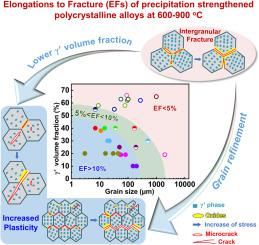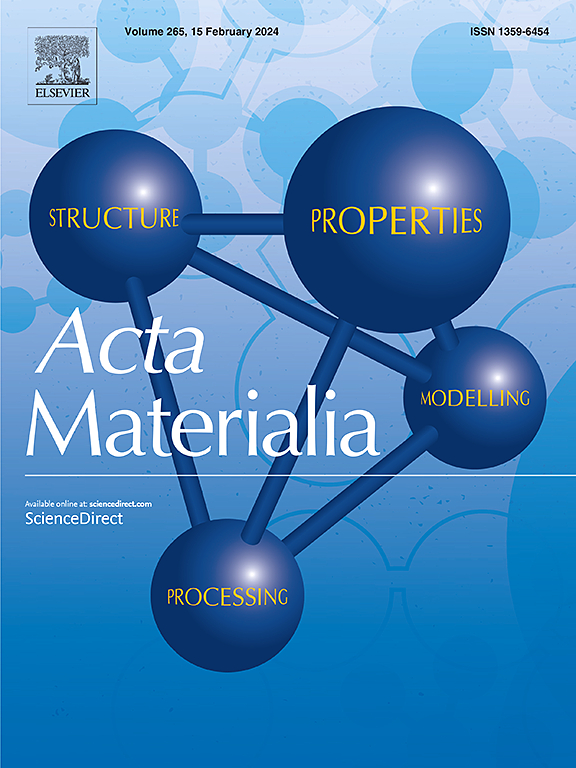The grain boundary brittleness at intermediate temperature in a precipitation strengthened Ni-based polycrystalline alloy
IF 9.3
1区 材料科学
Q1 MATERIALS SCIENCE, MULTIDISCIPLINARY
引用次数: 0
Abstract
The intermediate temperature brittleness (ITB), sudden fracture with insufficient plasticity in the range around 600–900 °C in precipitation strengthened polycrystalline alloys, plays a serious threat on the failure of structural hot components. To reveal the relationship between microstructure and ITB, a typical precipitation strengthened alloy GH4151 has been fabricated and processed in various routines, including single crystal (SX) growth and thermal-mechanical processing and their mechanical properties have been tensile tested. The SX GH4151 alloy fractures in a ductile manner with elongation to fracture (EF) exceeding 10 % at all test temperatures. In contrast, all polycrystalline alloys exhibit some degree of brittleness (EFs less than 5 %) at the temperature range of 700–900 °C. Microstructural characterization by using advanced microscopy techniques and a high temperature mechanical testing system in a transmission electron microscope, dynamically reveal the origin of the ITB in situ and find that the ITB is primarily caused by oxidation accelerated grain boundary fracture. Moreover, the microstructural effect, mainly γ′ volume fraction and grain size on the plasticity of precipitation strengthened alloys is established. Our findings might provide guidelines for overcoming ITB of precipitation strengthened polycrystalline alloys.


沉淀强化镍基多晶合金在中间温度下的晶界脆性
析出强化多晶合金中温脆性(ITB),即在600 ~ 900℃范围内塑性不足的突然断裂,严重威胁着结构热构件的失效。为了揭示组织与ITB之间的关系,制备了典型的沉淀强化合金GH4151,并对其进行了单晶(SX)生长和热机械加工,并对其力学性能进行了拉伸测试。SX GH4151合金在所有测试温度下均以韧性方式断裂,断裂伸长率(EF)超过10%。相反,在700-900℃的温度范围内,所有多晶合金都表现出一定程度的脆性(EFs小于5%)。利用先进的显微技术和高温力学测试系统在透射电镜下进行了显微组织表征,动态地揭示了原位ITB的起源,发现ITB主要是由氧化加速GB断裂引起的。此外,还确定了以γ′体积分数和晶粒尺寸为主的微观组织对析出强化合金塑性的影响。本研究结果可为克服析出强化多晶合金的ITB提供指导。
本文章由计算机程序翻译,如有差异,请以英文原文为准。
求助全文
约1分钟内获得全文
求助全文
来源期刊

Acta Materialia
工程技术-材料科学:综合
CiteScore
16.10
自引率
8.50%
发文量
801
审稿时长
53 days
期刊介绍:
Acta Materialia serves as a platform for publishing full-length, original papers and commissioned overviews that contribute to a profound understanding of the correlation between the processing, structure, and properties of inorganic materials. The journal seeks papers with high impact potential or those that significantly propel the field forward. The scope includes the atomic and molecular arrangements, chemical and electronic structures, and microstructure of materials, focusing on their mechanical or functional behavior across all length scales, including nanostructures.
 求助内容:
求助内容: 应助结果提醒方式:
应助结果提醒方式:


